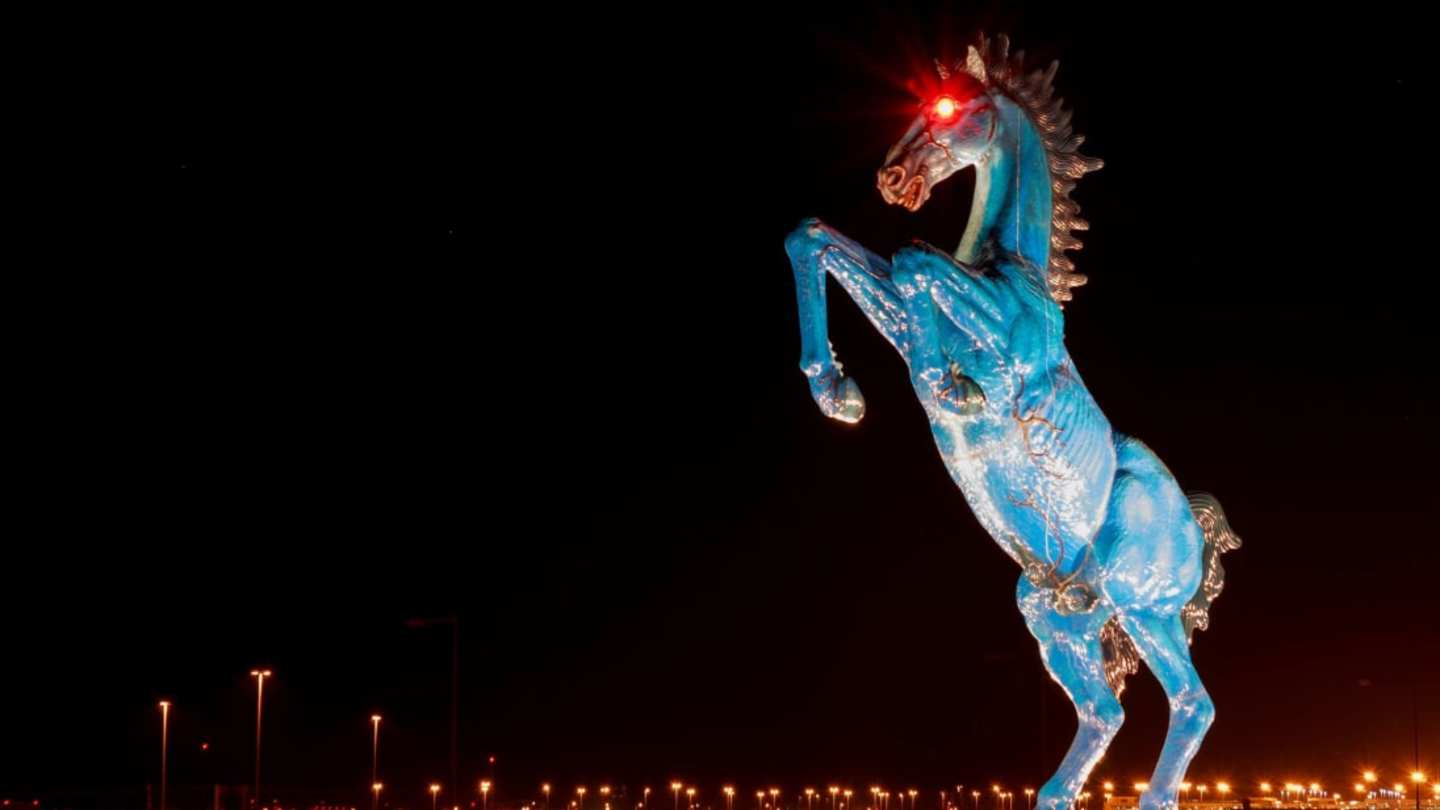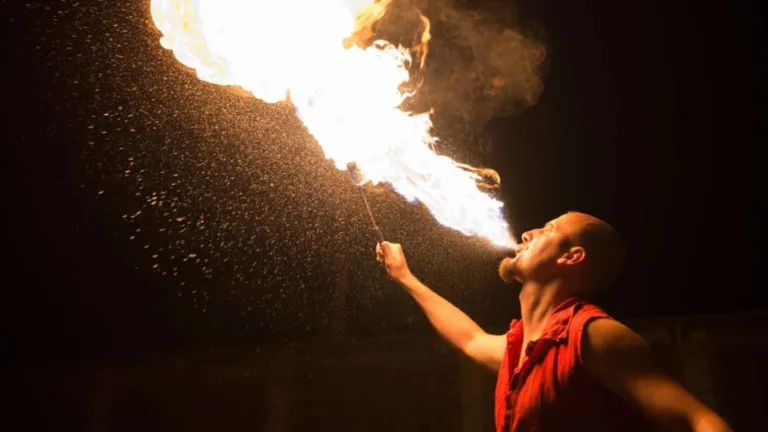The Denver International Airport (Dia), nestled in the heart of Colorado, is more than just a transportation hub. Since its grand opening in 1995, it’s become shrouded in mystery and intrigue, attracting those who believe in the extraordinary. While some dismiss Dia as simply a large airport with unique design choices, others see something much deeper at play.
The truth is, Dia has become synonymous with weird stuff in Denver Airport. Conspiracy theories abound, painting a picture of hidden agendas, Secret Societies, and unsettling symbolism. From cryptic murals to peculiar architectural features, every corner seems to whisper tales of the unknown.
One can’t help but feel a sense of unease as they navigate Dia’s Vast Terminals, wondering if those seemingly innocent details are actually carefully crafted clues. Whether you’re a die-hard believer in conspiracy theories or simply curious about the strange occurrences surrounding this Weird Airport, there’s no denying that Dia is Unlike Any Other.
Conspiracy Theories & Symbols at Dia
The most prevalent conspiracy theory surrounding Dia centers on the airport’s bizarre artwork and architectural elements. Some believe these are not mere decorations but cryptic messages meant to reveal a hidden agenda. One particularly unsettling example is the series of murals depicting apocalyptic scenes and ominous figures, leading some to speculate about a connection to a New World Order or impending global catastrophe.
Then there are the symbols scattered throughout the airport – from the strange floor inlay designs to the dedication stone with its Masonic imagery. These seemingly innocuous details have fueled theories about Dia being built by a secret society with sinister intentions. The most outlandish claims suggest that Dia is actually a hub for Global Elites, a site where they meet in secrecy and plot their schemes. While these theories seem far-fetched, it’s hard to ignore the sheer volume of symbolism at play, which undeniably adds an air of Mystery To weird things about Denver airport.
 Which Nuts Are Not Nuts: Unmasking Botanical Misconceptions
Which Nuts Are Not Nuts: Unmasking Botanical MisconceptionsAdding fuel to the fire are claims that the airport was designed with extensive underground tunnels, possibly housing a secret government headquarters or even an elaborate bunker system. The existence of these tunnels is Officially Denied, but that hasn’t stopped conspiracy theorists from interpreting them as evidence of a massive cover-up.
Masonic References and Hidden Agendas
One of the most intriguing aspects of Dia’s mystique lies in its apparent Masonic references. A dedication stone installed during the construction process bears a curious inscription mentioning a “New World Airport Commission,” a group that seemingly doesn’T Exist. This, coupled with Masonic symbols etched into various parts of the airport, has led some to believe that Dia was built under the direction of a secret society with a Hidden Agenda.
Theories abound about what this hidden agenda might be. Some speculate that the Freemasons are using Dia as a base for Their Operations, a place where they can meet and carry out their plans in secrecy. Others suggest that the symbols represent a plan for global domination or even a new world order. While there’s no concrete evidence to support these claims, the sheer number of Masonic references at Dia is certainly enough to raise eyebrows and fuel speculation.
The dedication stone itself has become a focal point for conspiracy theorists. Some believe its cryptic message hints at a deeper meaning, perhaps a warning about the future or a call to action for those in the know. Whether you’re a believer in conspiracies or simply intrigued by the mysteries surrounding Dia, the Masonic references add another layer of complexity to this already fascinating Weird Airport.
The Mysterious Tunnels and Underground Complex
Adding to Dia’s enigmatic aura is a network of extensive tunnels that weave beneath the airport. These subterranean passages were initially intended for an automated baggage system, but the project was ultimately abandoned. This has led many to believe that the tunnels serve a different purpose, perhaps housing a secret government complex or even a hidden underground city.
Rumors about these tunnels have circulated for years, fueled by eyewitness accounts and alleged Leaks From Construction Workers. Some claim to have seen strange lights and unusual activity within the Tunnel System, while others whisper about buried buildings and hidden entrances. The lack of transparency surrounding the tunnels only intensifies the speculation, leaving many wondering what secrets are truly being kept beneath Dia’s surface.
While official explanations dismiss the tunnels As Abandoned Infrastructure, the sheer size and complexity of the network, coupled with the persistent rumors, make it hard to dismiss them entirely. It’s easy to imagine a vast underground complex teeming with activity, hidden from the prying eyes of the public. The weird airport’s tunnel system stands as one of its most compelling mysteries, inviting us to delve deeper into the unknown and question what lies beneath.
Blucifer: A Cursed Symbol?
Standing sentinel over Dia’s entrance is a colossal 32-foot-tall Blue Mustang sculpture named Blucifer. Its glowing red eyes and menacing expression have made it both a striking landmark and a source of unease for many visitors. But Blucifer’s story goes beyond its imposing appearance; it’s shrouded in tragedy and fueled by rumors of a curse.
The sculpture was commissioned to embody the spirit of Colorado, but during its creation, a series of bizarre and unsettling Events Unfolded. The artist, Luis Jiménez, tragically died in 2006 when a section of the sculpture fell on him during construction, further adding to the sense of foreboding surrounding Blucifer. This tragedy has led many to believe that the sculpture is cursed, a symbol of ill fate and misfortune.
Whether you subscribe to these theories or not, there’s no denying that Blucifer casts a long shadow over Dia. Its eerie presence and tragic backstory have cemented its place as one of the most talked-about symbols of this already weird airport. It serves as a reminder that sometimes, even the grandest creations can be haunted by darkness.
Delving Deeper into Denver’s Airport Mystery
Despite the numerous theories and explanations offered over the years, the true nature of Dia’s Mysteries Remains Elusive. While some dismiss these claims as mere flights of fancy, others remain convinced that there are deeper secrets hidden beneath the surface. The airport’s Unique Architecture, Cryptic Symbols, and unexplained occurrences continue to fuel speculation and intrigue.
Perhaps the most compelling aspect of Dia’s enigma is its ability to Spark Our Imagination. It invites us to question what we perceive as reality and consider the possibility that there are things Beyond Our Understanding. Whether you believe in conspiracies or simply enjoy a good mystery, Denver’s Airport offers a captivating glimpse into the unknown, leaving us with more questions than answers and a lingering sense of wonder.
Ultimately, Dia stands as a testament to the power of human curiosity and our enduring fascination with the unexplained. Its mysteries continue to captivate and inspire, reminding us that there are still places and phenomena in the world that defy easy explanation. Perhaps, One Day, we’ll uncover all the secrets hidden Within Its Walls, but until then, Dia will remain a captivating enigma, shrouded in mystery and legend.










